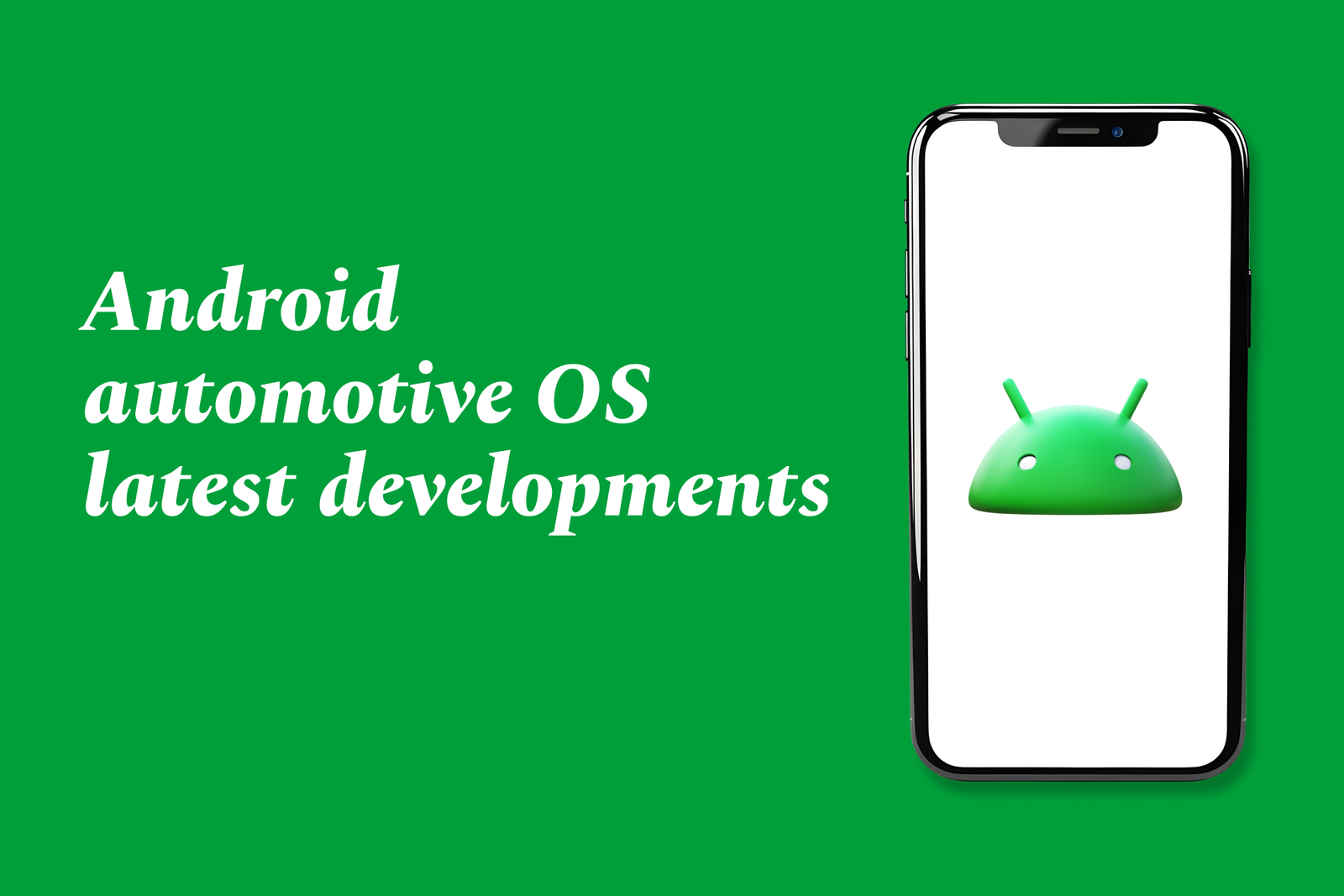Android Automotive OS Latest Developments
Android Automotive OS is an Android-based platform integrated into vehicles for infotainment and vehicle controls. Latest developments include multi-screen support, expanded app ecosystem, growing OEM adoption, and the upcoming Gemini AI for advanced voice interaction and smarter in-car experiences.
Android automotive OS latest developments
1 ) Industry Adoption and Market Overview
In 2024, most car manufacturers are transitioning to Android Automotive OS (AAOS), with few exceptions such as Tesla (using Linux) and Mercedes (Linux platform with Android apps).
Some Chinese brands use standard Android but not specifically AAOS.
The majority of OEMs either have or plan to have AAOS based infotainment systems.
2 ) Google Automotive Services (GAS) vs Non GAS Options
GAS includes Google Maps, Google Play Store, and Google Assistant, requiring commercial agreements and adherence to Google's technical and testing requirements.
Brands currently using GAS include Volvo, Polestar, Renault, Ford (Lincoln), GM, Nissan, Honda, and Porsche (future plans).
GAS advantages: access to popular navigation, apps, and voice services. Disadvantages: higher cost, dependency on Google, regulatory scrutiny (antitrust investigations in Germany), and limited customization.
Non GAS carmakers use third party navigation (Mapbox, TomTom, HERE), voice assistants (Alexa), and app stores (Faurecia Aptoide), offering greater flexibility and market adaptability. Brands using non GAS include Stellantis, BMW, MINI, Dacia, Lucid, Rivian, Lotus, and Lynk & Co.
Google still imposes some requirements even on non GAS systems (e.g., mandatory notification center).
3 ) Android 14 and Multi Screen Support
Android 14 AAOS introduces multi screen support, enabling seamless shared and individual entertainment experiences across multiple vehicle displays.
This feature allows front passengers to control rear screens and contributes to a more integrated infotainment experience.
Adoption may lag behind Android releases due to carmakers often using older versions.
4 ) Expanding App Ecosystem and Developer Opportunities
Over 50 vehicle models now support Android Automotive OS with Google built in and have nearly 300 apps available on the Play Store optimized for safe driving and parked entertainment.
Android Auto compatibility has expanded to nearly all new vehicles, with about 250 million compatible cars worldwide.
Google encourages developers through quality tiers (Car ready, Car optimized, Car differentiated) that enable apps to run in parked mode or while driving, with richer experiences using different vehicle screens.
5 ) Introduction of Gemini AI for Cars
Google is introducing Gemini, an advanced AI system, to cars.
Gemini empowers natural voice conversations and multitasking, enhancing driver safety and convenience by allowing drivers to interact using natural language—for example, navigating to locations mentioned in emails or reporting traffic incidents by voice.
Navigation apps can integrate with Gemini through specific intent formats for navigation, search results, and custom actions.
Gemini is set to roll out in the coming months, opening new frontiers for AI driven in car experiences.
6 ) Developer Tools and Resources
Google has released new tools such as the Car App Templates Design Kit and Car App Library improvements to facilitate app development for cars.
The Weather app category has graduated from beta, allowing developers to publish production ready weather apps for cars.
The Car Ready Mobile Apps program helps bring mobile apps to cars with minimal effort, supporting apps that engage users safely while driving or parked.
Summary:
The Android Automotive OS ecosystem in 2024–2025 is rapidly evolving with wide OEM adoption, a split between Google Automotive Services and independent approaches, enhanced multi screen capabilities in Android 14, growing app availability, and the anticipated introduction of Google's Gemini AI for safer, smarter voice interactions. Google continues to invest in developer tools and programs to accelerate innovation in automotive digital experiences.
https://justacademy.in/news-detail/android-system-ui-refresh-news
https://justacademy.in/news-detail/flutter-lts-release:-what-it-means
https://justacademy.in/news-detail/flutter-in-electric-vehicle-apps
https://justacademy.in/news-detail/flutter-forward-2025-recap
https://justacademy.in/news-detail/flutter-developer-roadmap-after-2025
Related Posts
Java supports GDPR and data privacy by enabling secure data handling through encryption, controlled access, and precise data management. It allows developers to minimize PII exposure, ensure data confidentiality, and design workflows that comply with data protection regulations effectively.
Java code quality tools have evolved to include advanced static analysis, integrated security checks, and AI-powered code reviews. These updates help developers detect bugs, enforce coding standards, and enhance security, streamlining the development process and improving overall code reliability.
Java remains a cornerstone in big tech companies, evolving with modern features like records, pattern matching, and virtual threads. Its robust ecosystem, enhanced performance, and growing AI integrations keep it vital for both legacy systems and innovative new projects.
Java and CI/CD pipeline optimizations streamline Java application development by automating builds, tests, and deployments. They improve efficiency through parallelization, caching, and secure secrets management, enabling faster feedback loops and more reliable, scalable software delivery.
Java supports modern cryptography standards through its flexible Java Cryptography Architecture (JCA), enabling integration of advanced algorithms like AES, EdDSA, and post-quantum tools. Libraries like Bouncy Castle offer FIPS-certified, hardware-accelerated implementations for secure development.
Java 23 enhances record patterns by enabling concise, direct destructuring of record components within pattern matching, simplifying type checks and data extraction. This improvement boosts code readability and expressiveness by reducing boilerplate in handling immutable data classes.
Java remains a top choice for mobile app backends, powering scalable, secure, and high-performance server-side solutions. Latest trends include cloud-native microservices, reactive programming, and enhanced JVM optimizations, enabling efficient, flexible, and robust mobile backend development.
Java SE 24 and LTS Java SE 21 offer enhanced features and performance, while Apache Spark 4.0.0 introduces Scala 2.13 support and advanced ML and SQL capabilities. Together, they empower developers to build scalable, high-performance data applications with modern tools.
JUnit 5 modernizes Java testing with a modular architecture, improved assertions, and seamless Java 8+ support. Beyond JUnit, tools like Mockito and AssertJ enhance mocking and assertions, creating a powerful, flexible ecosystem for writing clean, efficient Java unit tests.
Java plays a pivotal role in cloud automation tools by providing a robust, platform-independent language used to build scalable automation frameworks like Jenkins and Selenium, enabling efficient CI/CD pipelines, testing, and orchestration across diverse cloud environments.










